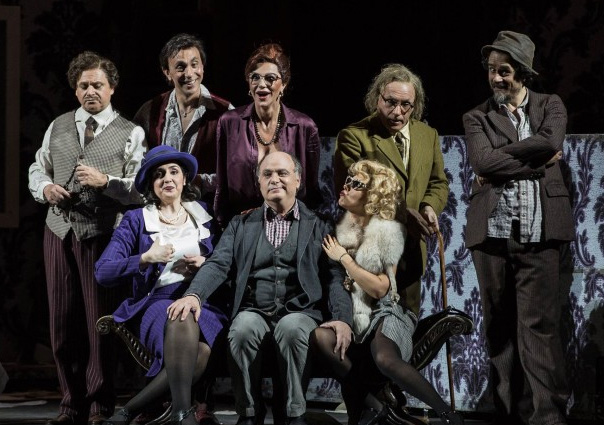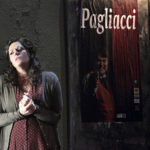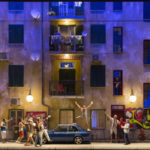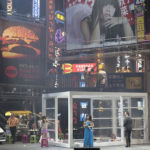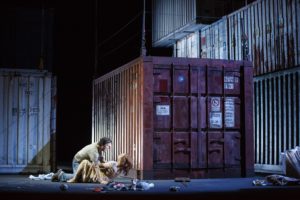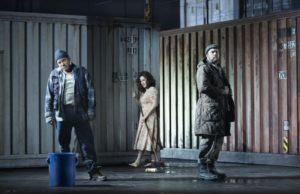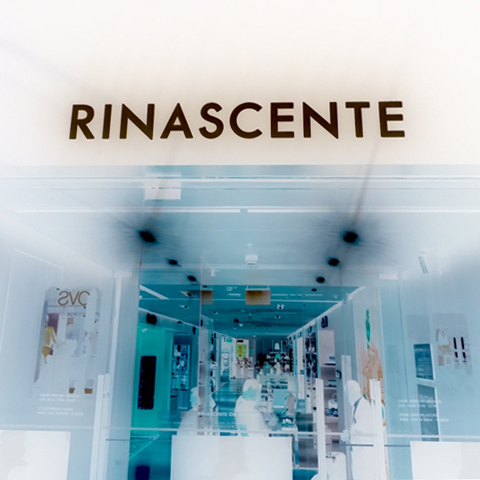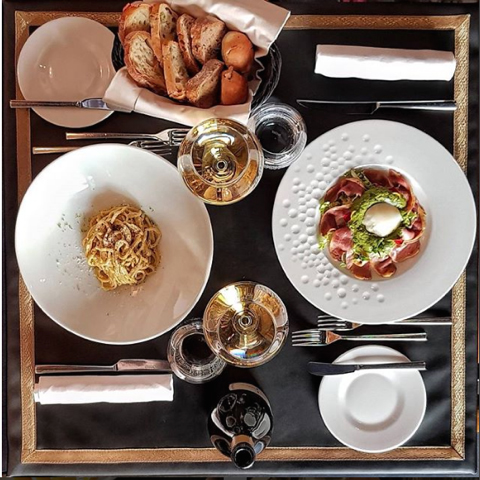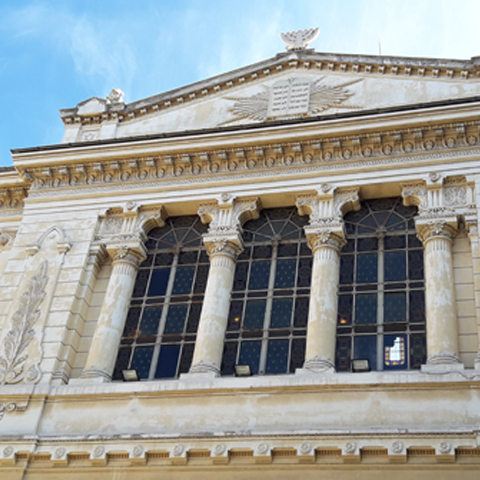It’s been a big year for Venetian opera director, Damiano Michieletto. His London-based production of Cavalleria Rustica/Pagliacci won a Laurence Olivier Award, and was named Best New Opera Production in the process. He directed The Barber of Seville at Opéra National de Paris, Madama Butterfly at Bergen National Opera House in Norway and Othello at the prestigious Theater an der Wien in Vienna. All this and we’re not even halfway through the year yet.
- Cavalleria Rustica/Pagliacci
- The Barber of Seville
- Madama Butterfly
- Othello
Michieletto only made his directing debut in 2003, but one look at his CV reveals he has directed some of the most famous operas whilst jet-setting around the globe. Milan, Copenhagen, and even Tokyo all feature in his astonishing career so far.
His direction is not without controversy, however. In 2015 Michieletto hit the headlines for his production of William Tell at The Royal Opera House in London regarding a five-minute scene in which a woman is graphically stripped and raped. This scene enraged audience members, leading to booing and a number of walkouts.
While critics argued whether this was an example of the realism opera needs in the 21st century or was needlessly gratuitous and voyeuristic, Michieletto stuck to his guns. He later hit back, saying, “If you only want to be entertained, don’t go to opera, because it is an art form which will tell you extreme stories about sexuality and power…it should not be romanticised.”
Despite the debate, it appears again that there’s no such thing as bad press; Michieletto and his innovative style continue to be in demand. This April saw him come to Rome’s Teatro dell’Opera for the first time with his production of Puccini’s Il Trittico.
 It was somewhat of a homecoming for the opera itself, which in 1919 had its European premiere here in Rome at the very same opera house. Puccini had not been to the world premiere in New York so the connection to the Italian capital became even stronger.
It was somewhat of a homecoming for the opera itself, which in 1919 had its European premiere here in Rome at the very same opera house. Puccini had not been to the world premiere in New York so the connection to the Italian capital became even stronger.
When translated to English, triptych is a three-fold piece of work; and Il Trittico is made up of a trio of contrasting, one-act operas. Firstly, Il Tabarro, set on the working docks of the River Seine, deals with the passion and jealousy between a husband, wife, and her potential lover. Next is Suor Angelica, the tragedy of a nun who was sent to a convent as punishment for her illegitimate child. Completing the triptych is the final contrasting element, Gianni Schicchi; a farcical tale of a con artist who tricks a greedy family, swindling them out of their inheritance.
“Il Trittico is special, as it’s a collection of three separate operas. At first glance, they have nothing in common,” explained Michieletto. “So what I have tried to do is to find the connections and give the public the feeling that they are following three chapters in the same story. Certain aspects re emerge…reminding us that this is a triptych, not one-one-one, but three-in-one.”
As the one thing that unites us all, death is a common thread between the three plays. After a brutal murder in Il Tabarro and a suicide in Suor Angelica, the third play takes place in the bedroom of a very rich; but very dead; man. However, in Michieletto’s version, the director focuses on the theme of parenthood, which simultaneously weaves in and out of the three segments.
“The loss of a son in Il Tabarro, the couple’s crisis linked to the death of a child,” the director explained to the Roman newspaper, Corriere della Sera. “In Suor Angelica it becomes the desire for motherhood punished…there is the punishment of a woman who had no intention of becoming a nun and is forced to go to the monastery, femininity castrated. In Gianni Schicchi the daughter weeps with her father. In my version it turns out that she is pregnant…for me it is important to bring out the humanity of the characters.”
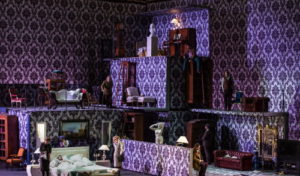
Schicchi
Typically, these three very different acts are performed in three very different sets. What Michieletto has done at Teatro dell’Opera however, is to again unite the pieces, this time through the stage design. The shipping containers used by dockworkers in Il Tabarro become cells and washrooms in the convent of Suor Angelica. In Gianni Schicchi, the containers are transformed and decorated in the style of the dead man’s luxury house, bedecked with garish wallpaper and expensive paintings.
Michieletto’s run at Teatro dell’Opera finished on 24 April but by all reports critics were appreciative of his interpretation of the original stories. With certainly no booing from audiences this time, we can’t help but wonder when we’ll have the opportunity to see this distinctive director return to Rome.
Damiano Michieletto
www.operaroma.it/en/shows/opera-trittico-2016
